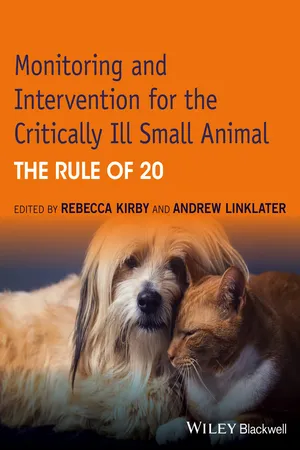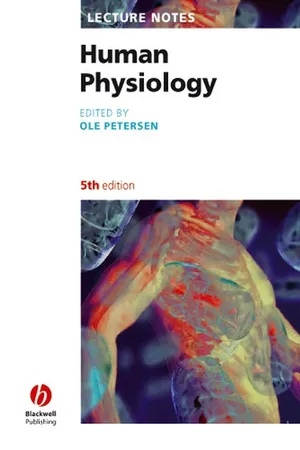Biological Sciences
Cardiac Cycle
The cardiac cycle refers to the sequence of events that occur during one heartbeat. It includes the contraction (systole) and relaxation (diastole) of the heart chambers, leading to the pumping of blood throughout the body. The cardiac cycle is essential for maintaining blood circulation and delivering oxygen and nutrients to tissues.
Written by Perlego with AI-assistance
Related key terms
4 Key excerpts on "Cardiac Cycle"
- eBook - ePub
- Anna Dee Fails, Christianne Magee(Authors)
- 2018(Publication Date)
- Wiley-Blackwell(Publisher)
Chapter 19 .The Cardiac Cycle for left ventricular function. Changes in aortic pressure, atrial pressure, and left ventricular pressure are shown in contrast to changes in left ventricular volume, events in the electrocardiogram, and the audible sounds of the heart (phonocardiogram).Figure 18‐3.Source: Guyton and Hall, 2006. Reproduced with permission of Elsevier.Diastole (dilation, from the Greek dia, apart; stello, place or put) refers to the relaxation of a chamber of the heart just prior to and during the filling of that chamber. Systole (contraction, from Gr. syn, together; stello, place) refers to the contraction of a chamber of the heart that drives blood out of the chamber. The adjectives atrial and ventricular can be used with diastole or systole to describe the activity of specific cardiac chambers (e.g., atrial systole refers to atrial contraction in Figure 18‐3 ). However, when the Cardiac Cycle is divided into only two general phases (diastole and systole) without specifying a chamber, it is generally assumed that division is based on ventricular activity. Thus, when the heart is said to be in systole or the systolic phase of the Cardiac Cycle, it is usually understood that this refers to ventricular systole. (Note in Figure 18‐3 the atrial contracts while the ventricle remains relaxed, i.e., ventricular diastole.)Two distinct heart sounds can be heard during each Cardiac Cycle in all domestic species, and these are typically described as lub (first sound, or S1 ) and dub (second sound, or S2 ). When listening to the heart and lungs with a stethoscope (auscultating), the first two heart sounds are separated by a short interval and followed by a longer pause (Fig. 18‐3 ). The pause increases with slower heart rates and in some species all four heart sounds can be heard. These sounds are used clinically to determine normal contraction and function of the Cardiac Cycle. The first two heart sounds divide the Cardiac Cycle into two phases, systole (ventricular) and diastole (ventricular). The first sound marks the beginning of systole, and the second sound marks the beginning of diastole (Fig. 18‐3 - eBook - ePub
- Peter Kam, Ian Power(Authors)
- 2015(Publication Date)
- CRC Press(Publisher)
For example, the P, QRS and T waves in standard limb lead II are produced by the changing course over time of waves of depolarization and repolarization of the cardiac chambers during each heartbeat. Atrial depolarization commences in the SA node and spreads down and to the left to the AV node; lead II records a positive (upwards) P wave. Ventricular depolarization starts in the interventricular septum and spreads down and to the right; lead II records a small negative Q wave. Ventricular depolarization then spreads epicardially, and the larger bulk of the left ventricle means that the net effect is for the depolarization to spread down and to the left; lead II records a large positive R wave. During activation of the remaining areas of the ventricle, the depolarization spreads upwards; lead II records a small negative S wave. The wave of ventricular repolarization moves from the epicardial to the endocardial surface from the ventricle; lead II records a positive T wave. The predominant direction of the vector through the heart during the depolarization of ventricles is from base to apex.MECHANICAL EVENTS OF THE Cardiac CycleThe Cardiac Cycle comprises two phases defined by ventricular muscle mechanical activity: systole (contraction) and diastole (relaxation). During systole, ventricles contract, AV valves close (first heart sound) and intraventricular pressure rises until aortic and pulmonary valves open (isovolumetric ventricular contraction); ventricular ejection of blood then takes place (stroke volume). During diastole, the ventricles relax, aortic and pulmonary valves close (second heart sound), intraventricular pressure falls until the AV valves open (isovolumetric ventricular relaxation) and ventricles then fill with blood again. Atrial contraction completes ventricular filling before the onset of the next ventricular systole.At an average resting heart rate of 72 beats per minute, the Cardiac Cycle lasts 0.8 second, systole is 0.3 second and diastole 0.5 is second. Therefore, at rest ventricular filling accounts for two-thirds of the Cardiac Cycle. At the maximum heart rate of 200 beats per minute – as may be seen with heavy exercise – each cycle only lasts 0.3 second; the ventricular action potential is shortened so that systole is 0.15 second, but only 0.15 second remains for ventricular filling during diastole. - eBook - ePub
- Rebecca Kirby, Andrew Linklater(Authors)
- 2016(Publication Date)
- Wiley-Blackwell(Publisher)
CHAPTER 11 Heart rate, rhythm, and contractilityDennis E. BurkettHope Veterinary Specialists, Malvern, PennsylvaniaIntroduction and physiology of heart rate, rhythm, and contractility
The primary function of the cardiovascular system is to provide oxygen and substrate to the tissues for energy production. The heart is the pump that controls the flow of blood and must continuously adjust to meet the demands of the body for oxygenated blood. This cardiac pump has a right and left side, each composed of an atrium resting above a heavily muscled ventricle (Figure 11.1 ). The left ventricular wall is normally significantly thicker than the right. Cup‐shaped valve leaflets (tricuspid on the right, mitral on the left) separate the atria from the ventricles. A thick muscular septum separates the right from the left ventricle. The right atrium receives blood from the systemic circulation and delivers it to the right ventricle. From here, the blood is pumped through the pulmonary artery into the pulmonary circulation for oxygenation and passive diffusion of carbon dioxide. The left atrium receives the oxygenated blood from the pulmonary veins and delivers it to the left ventricle. From here it is pumped into the systemic circulation through the aorta.Normal anatomy, pressures (systolic/diastolic/mean), and oxygen saturations (in circles) in the chambers of the heart, systemic circulation, and pulmonary circulation.Figure 11.1Source: Kittleson MD, Kienle RD, eds. Normal clinical cardiovascular physiology. In: Small Animal Cardiovascular Medicine. St Louis: Mosby. 1998. Used with permission of Elsevier [1]. Ao, aorta; LA, left atrium; LV, left ventricle; PA, pulmonary artery; RA, right atrium; RV, right ventricle.This pumping action of the heart occurs in a cyclical fashion through myocardial contraction and relaxation. This is described as the Cardiac Cycle and is illustrated in Figure 11.2 . The myocardial cells undergo electrical depolarization, triggering calcium movement within the cell, illustrated in Figure 11.3 . The period of ventricular contraction is termed systole and the period of relaxation is called diastole - eBook - ePub
Lecture Notes
Human Physiology
- Ole H. Petersen(Author)
- 2019(Publication Date)
- Wiley-Blackwell(Publisher)
Chapter 15 Cardiovascular System — The Heart15.1 Introduction
The heart is an electrically controlled and chemically driven mechanical pressure-suction pump. The electrical control signals and emerging mechanical activity are generated in the heart itself (i.e. it beats rhythmically in the absence of external stimulation even after isolation or transplantation), and the underlying processes are modulated by extra-cardiac parameters.Regulation, by definition, consists of feed-forward and feedback information pathways, whose combination gives rise to a regulatory loop. The intra-cardiac electro-mechanical regulatory loop consists of a feed-forward pathway that links cardiac electrical excitation to mechanical activity via excitation–contraction coupling (ECC), and a mechano–electric feedback pathway (MEF; see Fig. 15.1 ). This regulatory loop is affected by higher-order neuro-hormonal control, and is subject to modulation by extra-cardiac physical factors, such as the mechanical environment of the heart, temperature, or external electrical stimulation.All essential components and mechanisms of the intra-cardiac mechano–electric regulatory loop are present at the level of the heart’s basic functional unit — the cardiomyocyte. Cardiomyocytes are structurally and functionally integrated into a highly coordinated tissue network, and they show regionally varying functional properties. They underlie such specialized functions as cardiac pacemaking (rhythmic generation of electrical excitation that drives the heartbeat), conduction of excitation, and contraction. The following sections will review essential aspects of cardiac structure, address in detail the electrical and mechanical processes that give rise to the heartbeat, and describe their dynamic interaction during the Cardiac Cycle.15.2 Cardiac structure
Functional gross anatomy
The four-chambered heart contains several functionally relevant sites of specialized electro-mechanical function. In mechanical terms, the right and left atria serve as a reservoir for ventricular blood filling and, via their own contractile activity, contribute 10–15% to ventricular filling. The right and left ventricles form the actual pump of the circulatory system. Electrically specialized tissue includes: the sino-atrial (SA) node in the dorsal wall of the right atrium, where the primary pacemaker cells of the heart are located; the atrioventricular (AV) node, which forms the only conducting passage through a connective tissue layer separating the atria from the ventricles; and additional fast conduction pathways between AV node and ventricular myocardium, which support uniform electrical activation of the ventricular muscle mass. Blood flow through the heart is directed by a dual system of ventricular inlet (AV valves) and outlet valves (pulmonary and aortic valves), which prevent back-flow into preceding sections of the circulatory system during the cycle of ventricular contraction and relaxation
Learn about this page
Index pages curate the most relevant extracts from our library of academic textbooks. They’ve been created using an in-house natural language model (NLM), each adding context and meaning to key research topics.



